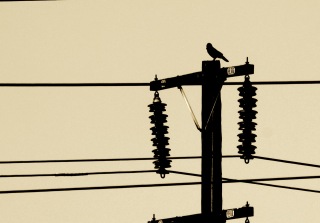In this week’s IP-101 lesson, we’ll talk briefly about the rule of thirds. If you’ve just purchased your first camera or you’re an avid Instagrammer this will do you well. Don’t get alarmed by the evil word “rule” or get taken aback by the sinister sounding “thirds,” this technique is a million times easier to learn than it sounds. Even better, the rule of thirds will give you a better photo.
Do you want your friends to like your photos and not even know why? You want your amateur photographs to look somewhat top notch? After this lesson, you’ll be well on your way to astonishing your peers with your amazing photographs.
First off, let’s discuss what the rule of thirds actually is. It’s a grid that breaks up the frame into nine equal parts, as seen above. That’s all cool and everything, but why would you care? What’s so cool about making a grid on the frame? Why would I want to limit my creativity? Well, you’re not.
What makes the rule of thirds so amazing is the it lays out for you the guidelines to getting the best desired effect. If you photograph your subject along the lines (ie the horizon, the edge of a building) it automatically looks good to people and they don’t know why. But you do! It’s a secret!
EVEN BETTER!! When you photograph your subject at the intersection of the lines (ie a beautiful woman’s face) you suddenly have a stunning work of art. It’s true! I tell no lies.
When talking to other photographers, it’s handy to know the jargon. You already know a key term, Rule of Thirds, but there a couple more you need to know. First off, the intersections of the line are called power points or crash points. I’m pretty sure Microsoft commandeered the term power point which is why we now call them crash points. Either way works if you’re talking to a photographer.
The beauty of knowing these key terms when talking to photographers is know when the other guy is full of it. It’s always fun to pick out the wanna-be’s and blow-hards.
Below are two photographs of the same thing. One is shot using the rule of thirds and one is not. Can you tell which one is which?
If you guessed the bottom one, you’re well on your way to becoming a professional! If not, just keep at it. A failure is an amazing experience because it allows you to see where you went wrong, so you can keep improving. Never dwell on your mistakes. Alright enough with the pep talk, let’s review. Take out a pen and paper, or open a new document and write down these questions and stay tuned for the next IP-101 post to get the answers.
- The Rule of Thirds – What is it?
- Why do we use the rule of thirds?
- What are the intersections of the lines called?




